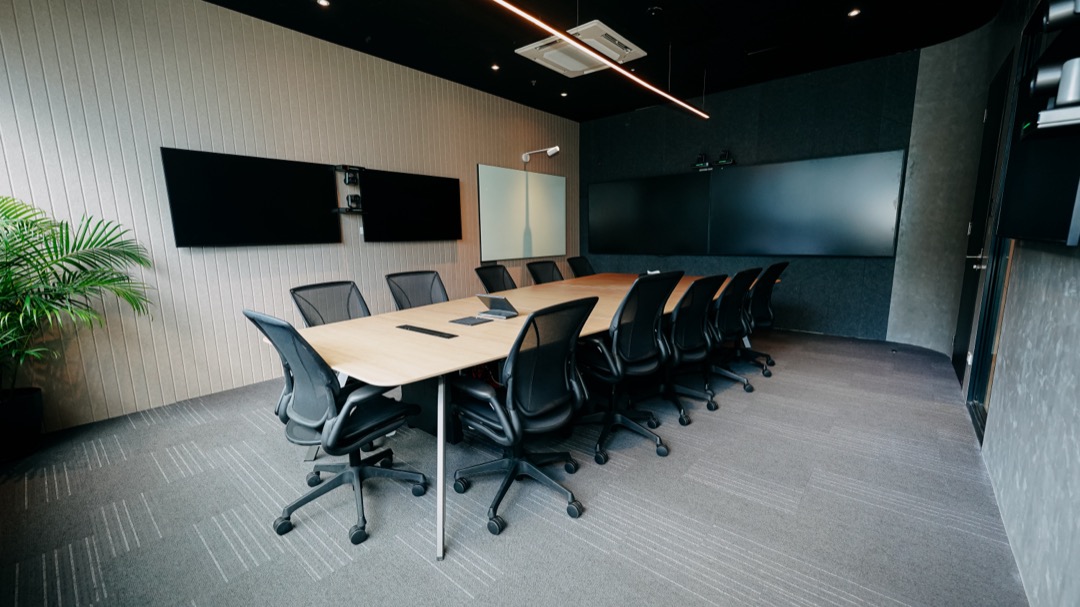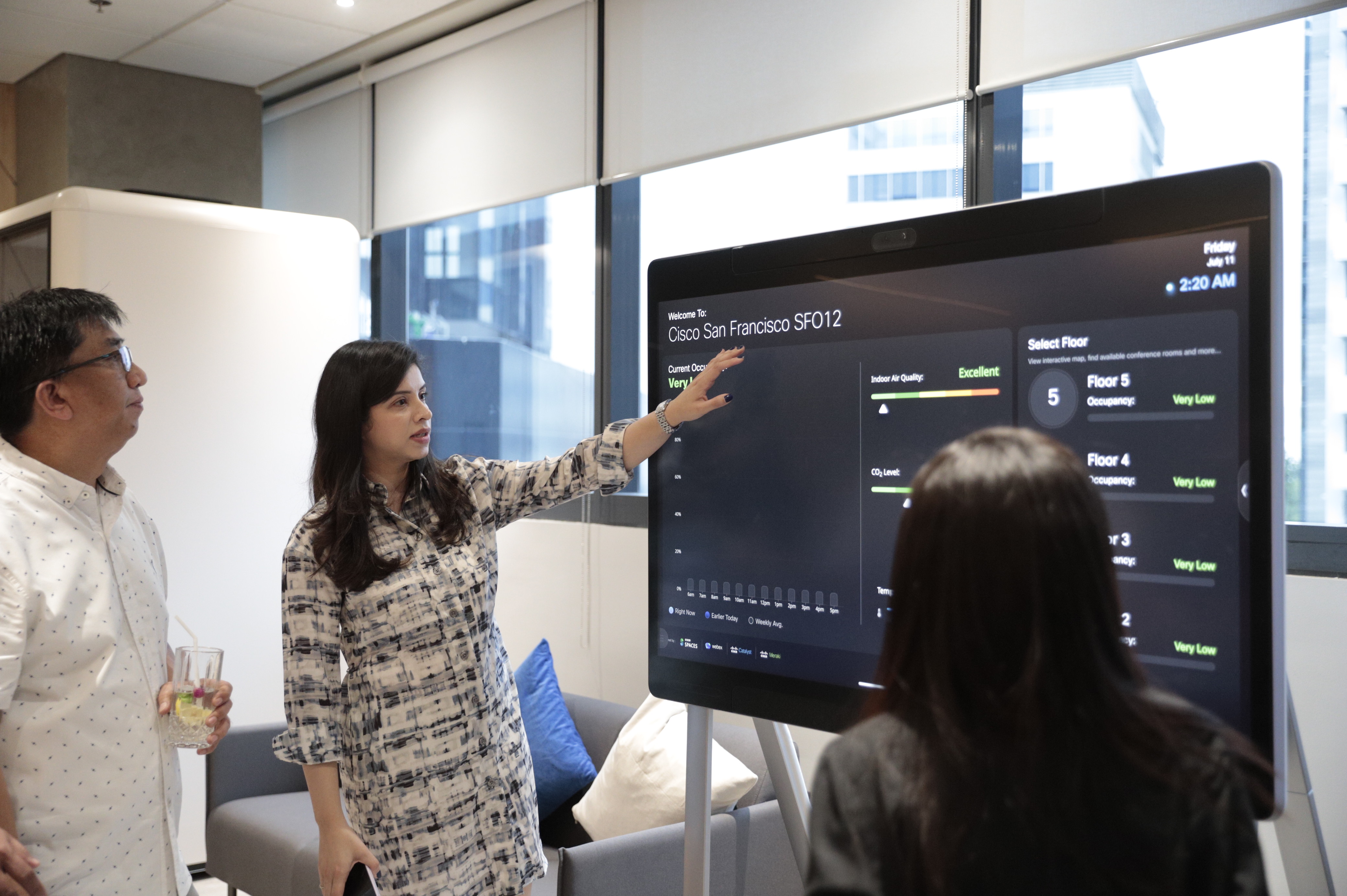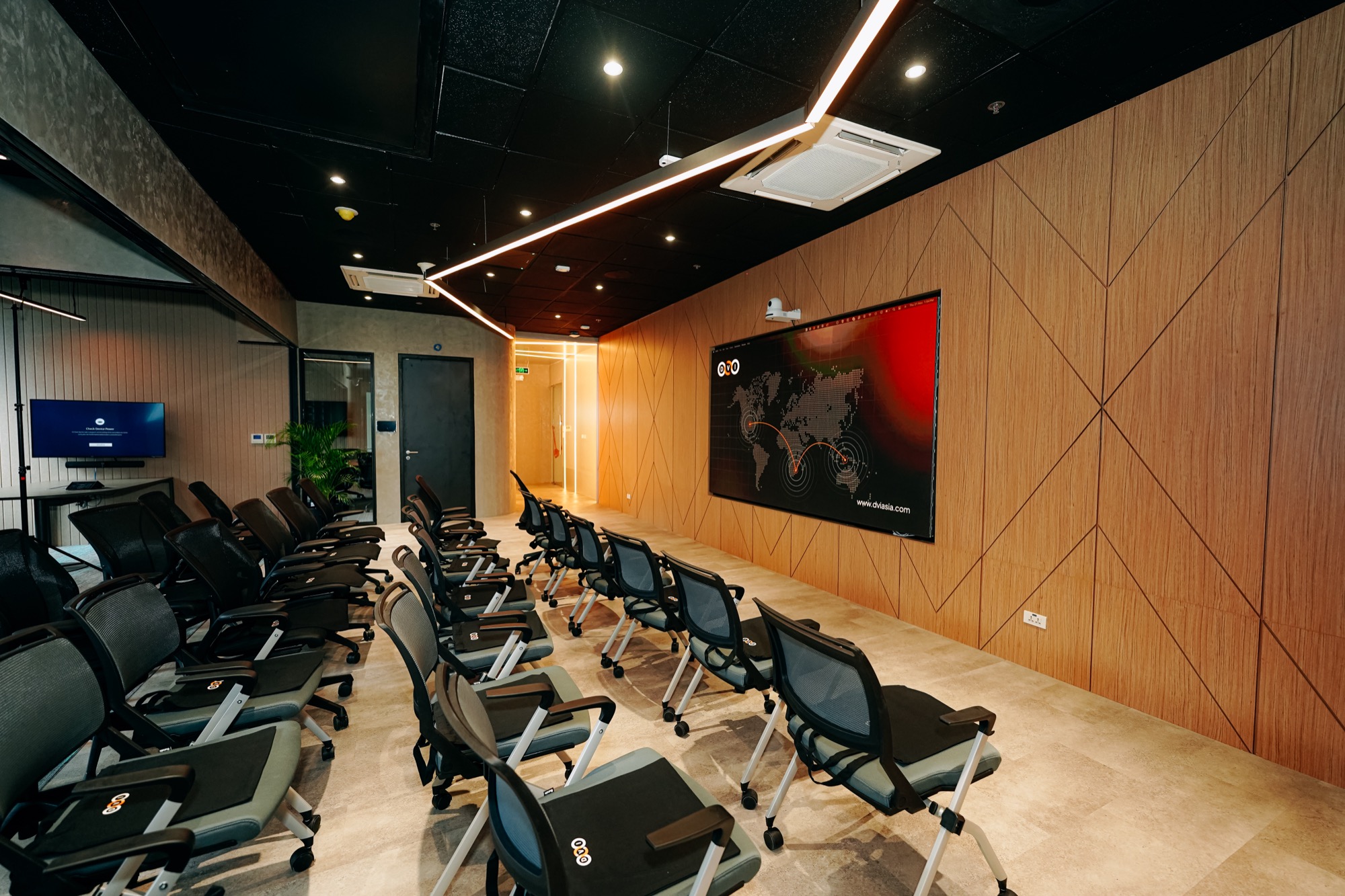Future Proofing Your Boardrooms: Designing for the New Executive Reality

Picture this. You walk into your boardroom for an important meeting. The agenda is packed, the decision makers are ready, and half the attendees are joining from different time zones. The last thing you want is to waste ten minutes trying to connect the video call or get the presentation on screen.
This is the new executive reality. Leadership teams are working in a mix of in-person and remote settings, making fast, high-stakes decisions while collaborating across continents. Boardrooms have to keep up with that pace. The way they are designed today will decide whether they are an asset to your business or a constant frustration.
Let’s look at what it takes to future proof a boardroom so it works flawlessly now and stays relevant for years to come.
1. The shift in how boardrooms are used
Boardrooms used to be about bringing everyone into the same room. The focus was on a big table, comfortable chairs, and maybe a projector for presentations. Today, the format is rarely that simple.
Meetings often have a mix of executives in the room, others dialing in from home, and guests joining from partner offices. Important conversations might involve reviewing live dashboards, collaborating on shared documents, or making real-time edits to contracts.
This means the boardroom is no longer just a physical space, but has evolved into a collaboration hub that blends physical presence with digital participation.
.avif)
2. Why “future proofing” matters
Technology moves fast. If your boardroom AV is built only for the way you work today, it will feel outdated within a few years. Future proofing means anticipating the needs of tomorrow and building flexibility into the design now.
That could mean:
- Choosing platforms that integrate with multiple conferencing tools
- Installing displays and cameras that can handle future resolution upgrades
- Planning cabling and power in a way that makes adding new devices easy
- Designing furniture layouts that adapt to different meeting formats
It’s also about avoiding costly overhauls by making smart, scalable choices from the start.
3. The role of hybrid meeting technology
Hybrid meetings are now the norm for executive teams. A modern hybrid boardroom setup should deliver a frictionless experience for all attendees, including in-room and remote participants. That means:
- High-quality video conferencing systems that capture everyone clearly
- Advanced microphones that pick up voices without echo or distortion
- Multiple camera angles so remote attendees can see both the speaker and the room
- Interactive displays for live annotations and document collaboration
The goal is to make remote attendees feel like they are at the table as well.

4. Designing for decision making, not just presentations
Executives are making decisions on-the-spot as the meeting is conducted. That means the technology needs to support quick access to data, clear visuals, and uninterrupted discussion.
- Large displays should make financial charts or project timelines easy to read from any seat.
- Wireless presentation tools should allow anyone to share content without searching for cables.
- Real-time collaboration tools should allow edits and approvals on the spot.
When the meeting flows smoothly, decisions happen faster and with more confidence.
5. Audio is just as important as video
It is easy to focus on cameras and displays, but audio quality is what really makes or breaks a meeting. If remote participants cannot hear clearly, they will struggle to contribute and important points can get lost.
Investing in beamforming microphones or ceiling arrays ensures that voices are captured evenly, no matter where someone is sitting. Noise-cancelling DSP (digital signal processing) helps remove distractions like paper shuffling or HVAC hum.
Clear audio is one of the simplest ways to make your boardroom feel professional and future ready.
6. Flexibility in furniture and layout
Future proofing is not only about technology. It is also about how the room itself is set up.
Some meetings need a traditional boardroom layout with everyone facing the front. Others work better in a U-shape for discussion or in clusters for breakout sessions. Modular tables and movable seating let you reconfigure the space without losing functionality.
Cable management should be planned so that power and network connections are always within reach, no matter how the room is arranged.

7. Security and privacy considerations
Boardrooms often handle the most sensitive conversations in a company. That means the technology must be secure. Sensitive executive meetings require secure video conferencing platforms with encryption, sound masking, and protected AV networks.
Look for video conferencing platforms with end-to-end encryption. Use secure login methods for meeting access. Consider sound masking systems if the boardroom is near other offices. And ensure that your AV network is separated from the public internet where possible.
Future proofing here is about protecting confidential discussions as technology changes.
8. Sustainability in boardroom design
Modern executive teams are also thinking about sustainability. That could mean choosing energy-efficient displays, using LED lighting, and selecting furniture made from sustainable materials.
It also means designing sustainable boardroom technology setups that last longer and can be upgraded without replacing the entire system. This reduces waste and keeps your boardroom relevant for longer.
9. Working with AV integration specialists
The best way to future proof your boardroom is to work with AV boardroom design specialists who understand executive needs. At DVI Solutions Asia, we design collaborative spaces solutions that combine technology, ergonomics, and scalability.
We look at the size of your space, the way your team collaborates, and your long-term goals. Then we design a setup that works seamlessly now and has room to grow with your business.
It is not about installing the most expensive equipment. It is about creating a system that fits your workflow and stays relevant as technology evolves.
10. The boardroom of the future
With technology, we can expect AI-powered transcription that turns every meeting into searchable notes. Real-time language translation could make global board meetings truly barrier free. Cameras may automatically focus on whoever is speaking, and data visualisation tools will bring complex information to life instantly.
By future proofing now, you make it easier to adopt these innovations later. Instead of a costly rebuild, you will be able to add new features to a strong, flexible foundation.
Interested in learning more? Contact DVI Solutions Asia
Citations
DVI Solutions Asia – Enterprise Meeting Room Solutions
Chua, D. (2025, June 19). Everything you need to know about meeting room solutions for enterprises. DVI Solutions. Retrieved from https://www.dviasia.com/blog/everything-you-need-to-know-about-meeting-room-solutions-for-enterprises dviasia.com
DVI Solutions Asia – Hybrid Work & AV Integration
Chua, D. (2025, June 19). The future of hybrid work: How AV integration is shaping the workplace. DVI Solutions. Retrieved from https://www.dviasia.com/blog/the-future-of-hybrid-work-how-av-integration-is-shaping-the-workplace dviasia.com
Boardwise – Hybrid Meeting Technology
Kukovskyi, A. (2025, March 14). Hybrid meeting technology: The game-changer every boardroom needs in 2025. Boardwise. Retrieved from https://www.boardwise.io/en/blog/hybrid-meeting-technology boardwise.io
DVI Solutions Asia – Evaluating Video Conferencing Rooms
Chua, D. (2025, June 19). How to tell if your video conferencing rooms are worth the investment. DVI Solutions. Retrieved from https://www.dviasia.com/blog/how-to-tell-if-your-video-conferencing-rooms-are-worth-the-investment dviasia.com
DVI Solutions Asia – AV Systems for Small Businesses
Chua, D. (2025, July 22). What to consider when investing in an audiovisual system for small businesses. DVI Solutions. Retrieved from https://www.dviasia.com/blog/what-to-consider-when-investing-in-an-audiovisual-system-for-small-businesses dviasia.com
DVI Solutions Asia – Security & Privacy in Hybrid Work
Chua, D. (2025, June 19). Security and privacy concerns in hybrid work: How AV equipment addresses them. DVI Solutions. Retrieved from https://www.dviasia.com/blog/security-and-privacy-concerns-in-hybrid-work-how-av-equipment-addresses-them dviasia.com
Acoustics by Design – Sound Masking
Acoustics by Design. (n.d.). Professional sound masking systems for workspaces. Retrieved from https://www.acousticsbydesign.co.uk/sound-masking Acoustics By Design
DVI Solutions Asia – Eco-Friendly Conference Room Solutions
Chua, D. (2025, June 19). Eco-friendly conference room solutions for sustainable team meetings. DVI Solutions. Retrieved from https://www.dviasia.com/blog/eco-friendly-conference-room-solutions-for-sustainable-team-meetings dviasia.com
DVI Solutions Asia – Collaborative Spaces
DVI Solutions. (n.d.). Collaborative spaces. Retrieved from https://www.dviasia.com/collaborative-spaces dviasia.com
.png)
The Most Used Collaboration Equipment for Enterprise Teams
.png)
Transforming Live Events with Professional AV Solutions
.png)
